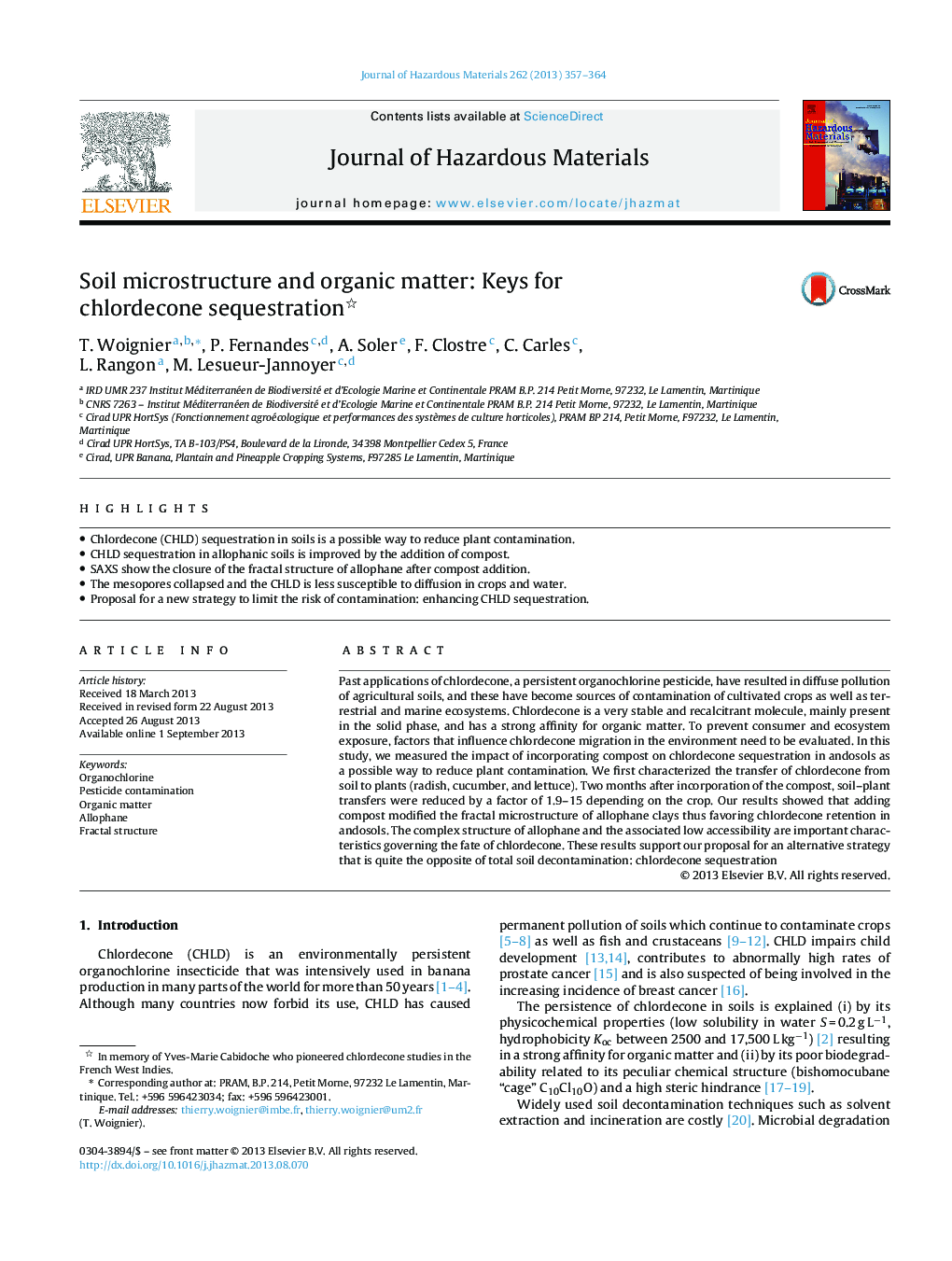| کد مقاله | کد نشریه | سال انتشار | مقاله انگلیسی | نسخه تمام متن |
|---|---|---|---|---|
| 577222 | 1453097 | 2013 | 8 صفحه PDF | دانلود رایگان |
عنوان انگلیسی مقاله ISI
Soil microstructure and organic matter: Keys for chlordecone sequestration
دانلود مقاله + سفارش ترجمه
دانلود مقاله ISI انگلیسی
رایگان برای ایرانیان
کلمات کلیدی
موضوعات مرتبط
مهندسی و علوم پایه
مهندسی شیمی
بهداشت و امنیت شیمی
پیش نمایش صفحه اول مقاله

چکیده انگلیسی
Past applications of chlordecone, a persistent organochlorine pesticide, have resulted in diffuse pollution of agricultural soils, and these have become sources of contamination of cultivated crops as well as terrestrial and marine ecosystems. Chlordecone is a very stable and recalcitrant molecule, mainly present in the solid phase, and has a strong affinity for organic matter. To prevent consumer and ecosystem exposure, factors that influence chlordecone migration in the environment need to be evaluated. In this study, we measured the impact of incorporating compost on chlordecone sequestration in andosols as a possible way to reduce plant contamination. We first characterized the transfer of chlordecone from soil to plants (radish, cucumber, and lettuce). Two months after incorporation of the compost, soil-plant transfers were reduced by a factor of 1.9-15 depending on the crop. Our results showed that adding compost modified the fractal microstructure of allophane clays thus favoring chlordecone retention in andosols. The complex structure of allophane and the associated low accessibility are important characteristics governing the fate of chlordecone. These results support our proposal for an alternative strategy that is quite the opposite of total soil decontamination: chlordecone sequestration
ناشر
Database: Elsevier - ScienceDirect (ساینس دایرکت)
Journal: Journal of Hazardous Materials - Volume 262, 15 November 2013, Pages 357-364
Journal: Journal of Hazardous Materials - Volume 262, 15 November 2013, Pages 357-364
نویسندگان
T. Woignier, P. Fernandes, A. Soler, F. Clostre, C. Carles, L. Rangon, M. Lesueur-Jannoyer,